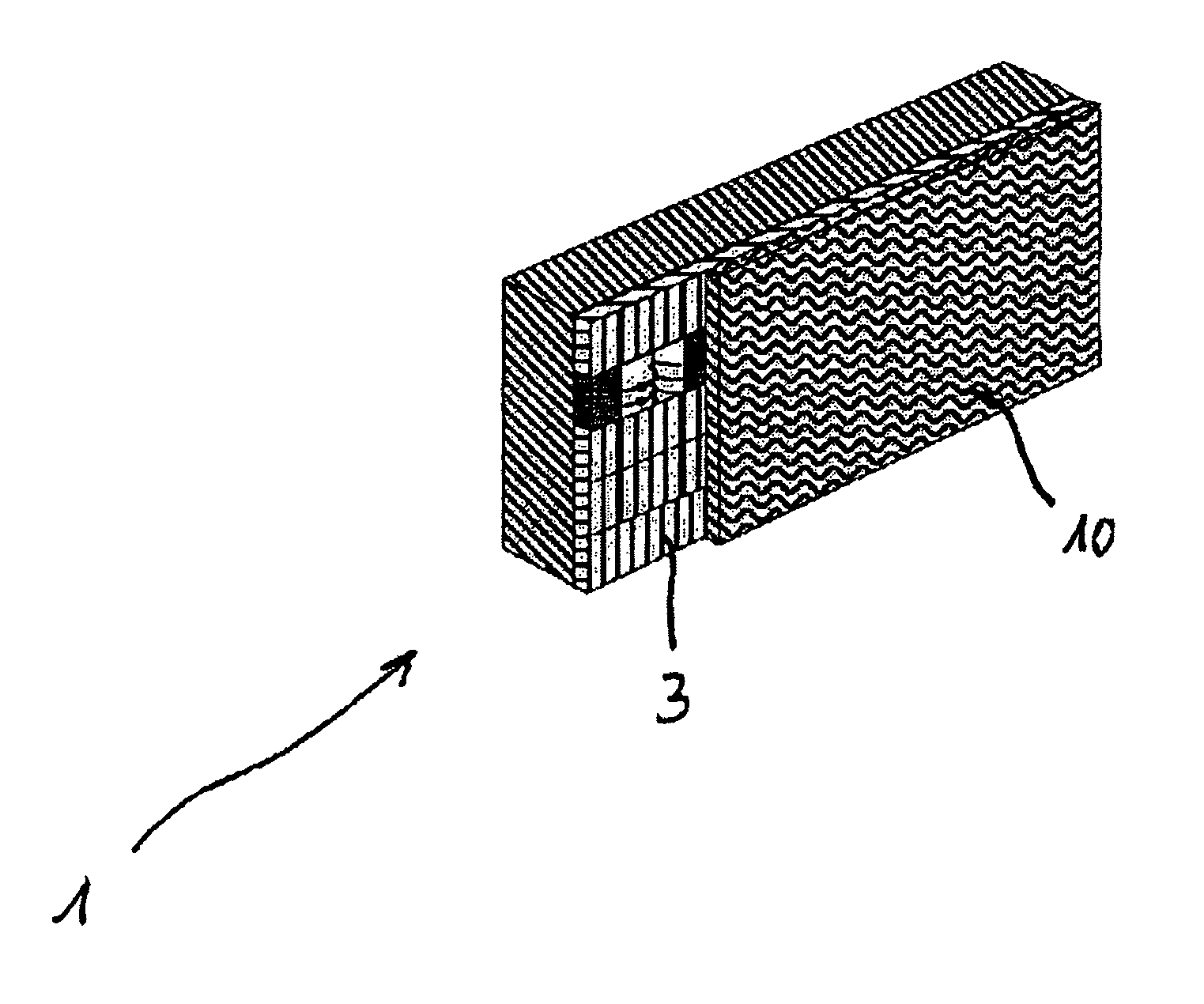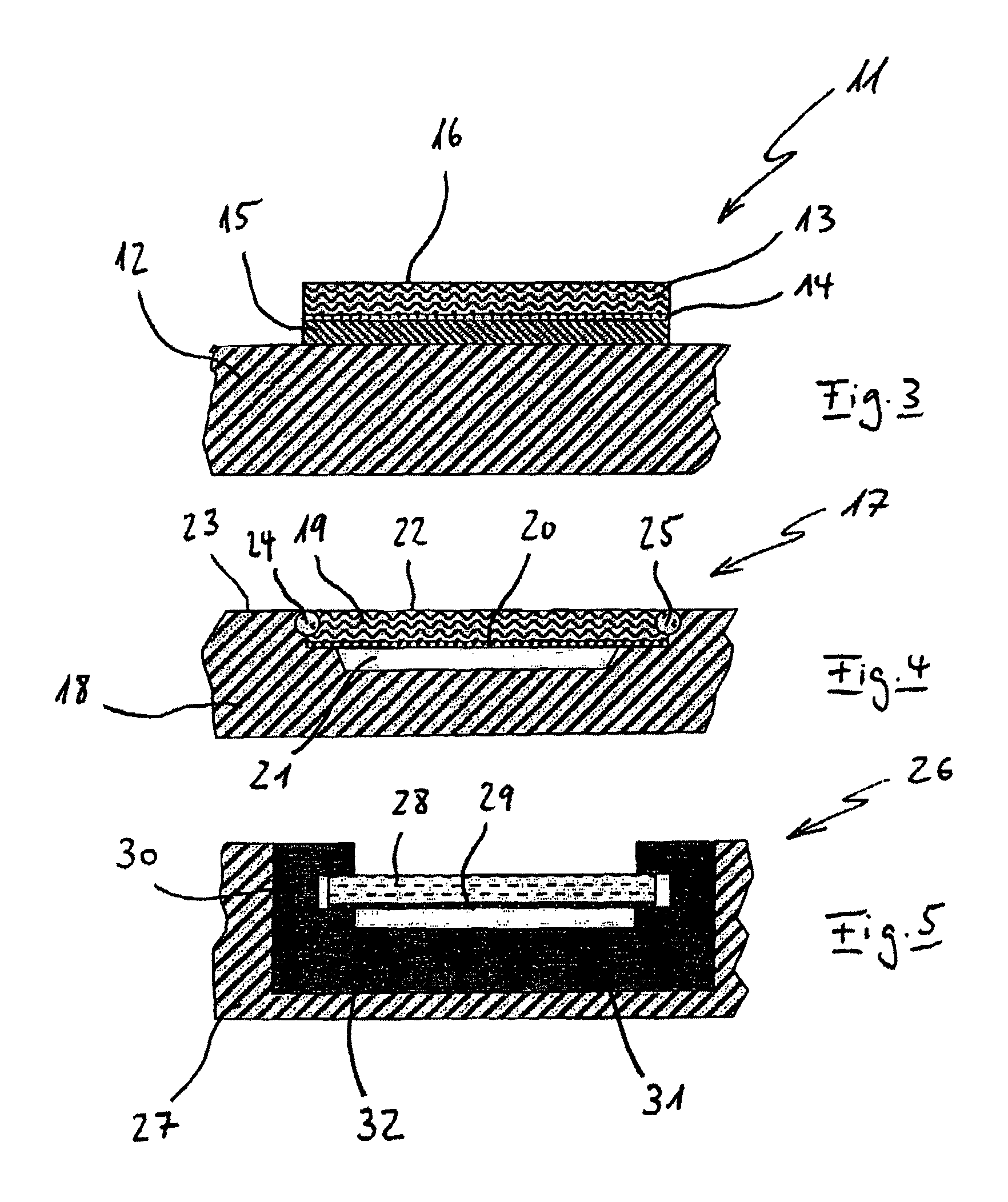Length measuring system
a technology of measuring system and length, which is applied in the direction of measuring tape, using mechanical means, instruments, etc., can solve the problems of inability to guarantee the permanent secure positioning of the measurement element on the support structure, inability to determine and inability to ensure the accuracy of the respective length measurement or position determination
- Summary
- Abstract
- Description
- Claims
- Application Information
AI Technical Summary
Benefits of technology
Problems solved by technology
Method used
Image
Examples
Embodiment Construction
[0028]FIG. 1 shows the schematic illustration of a longitudinal section of a measurement element 1 according to an embodiment of the invention. The measurement element 1 is configured as an elastically pliable or flexible measurement strip. The measurement element 1 consists essentially of a first non-magnetic layer 2, consisting of a metallic material, and a second magnetisable layer 3.
[0029]The first (non-magnetic) layer 1 covers the second (magnetisable) layer 3 completely, at least from one side. A measurement body 4 is formed in the second layer 3 by means of a magnetic method. The measurement body 4 consists in the present example of an incremental track 5 consisting of approx. 200 μm-wide magnetised regions 6, which are arranged with alternating polarity (north and south poles) in the longitudinal direction of the measurement element 1, and a reference track 7 for determining the absolute position, the reference track 7 being provided with distance-coded markers 8. To produce...
PUM
 Login to View More
Login to View More Abstract
Description
Claims
Application Information
 Login to View More
Login to View More - R&D
- Intellectual Property
- Life Sciences
- Materials
- Tech Scout
- Unparalleled Data Quality
- Higher Quality Content
- 60% Fewer Hallucinations
Browse by: Latest US Patents, China's latest patents, Technical Efficacy Thesaurus, Application Domain, Technology Topic, Popular Technical Reports.
© 2025 PatSnap. All rights reserved.Legal|Privacy policy|Modern Slavery Act Transparency Statement|Sitemap|About US| Contact US: help@patsnap.com



